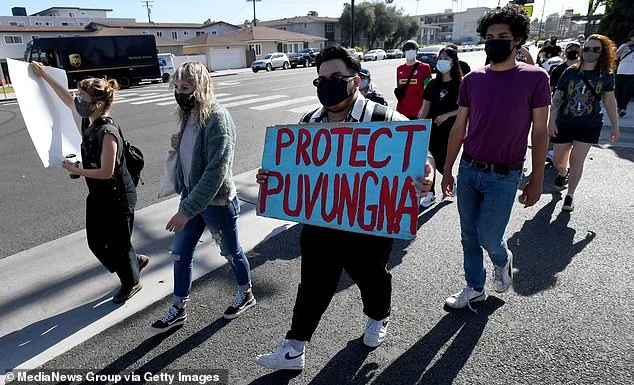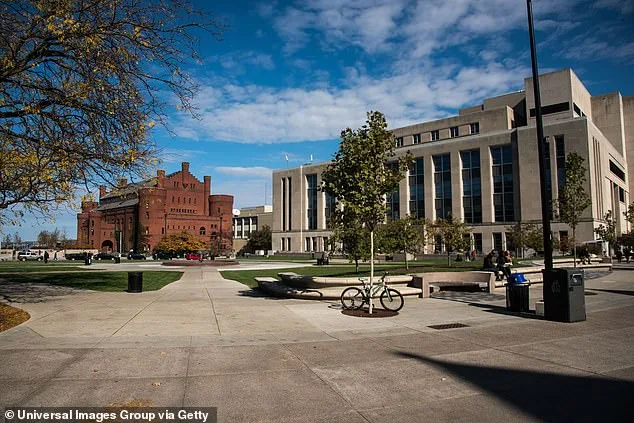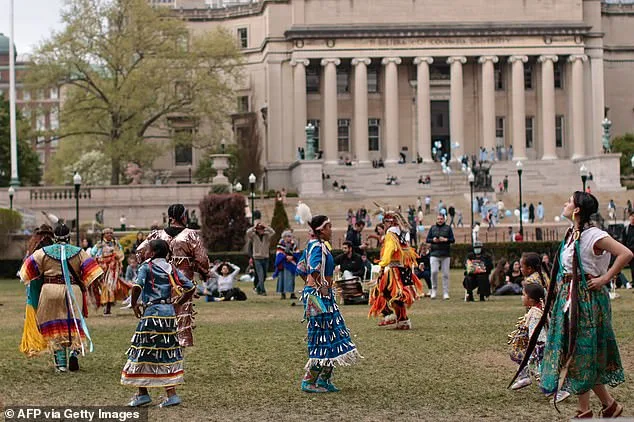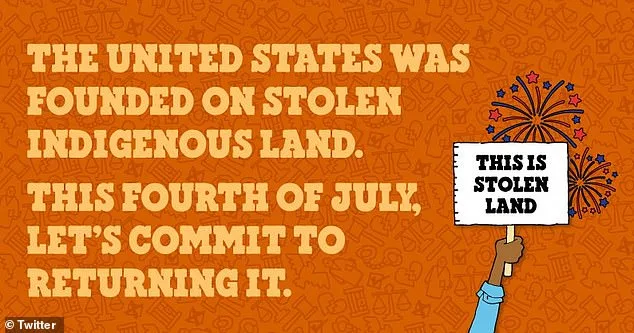Native American groups join the call for reparations and target colleges who took land from tribes and only exist ‘because of everything that was taken’
- Native American groups are demanding reparations centuries after numerous tribes had land taken by ‘land-grab universities and colleges’
- Following the signing of the Morrill Act by President Abraham Lincoln in 1862, approximately 10.7 million acres of land were seized from 250 tribes
- University of Minnesota received 94,440 acres of land, while Cornell University in New York acquired more than 987,000 acres across 15 states
Native American groups are now joining the call for reparations centuries after hundreds of tribes had land taken from them by ‘land-grab universities and colleges.’
An estimated 10.7 million acres of land was taken from 250 tribes following the signing of the Morrill Act by President Abraham Lincoln in 1862.
This law converted tribal lands into initial sites for land-grant higher education institutions in many states.
Institutions such as the University of Minnesota, which received 94,440 acres of land, and Cornell University in New York that received more than 987,000 acres are being targeted. Cornell, in total, received land in 15 states – all at prices far below a fair market value.
Now, as several states and cities consider reparations for black Americans, the movement is serving as the impetus for Native American tribes who also believe they also deserve payment for the stolen land.


‘You have these schools that have tens of millions of dollars at their disposal, but they are not looking at any ways they can improve living situations for Indigenous peoples today,’ said An Garagiola, a descendant of the Bois Forte Band of Chippewa to the Washington Post.
‘Their existence as institutions, as schools of learning, are only there today because of everything that was taken.’
In response to the demands for reparations from so call ‘land-grab universities,’ colleges and universities across the nation are now grappling with the need to make amends.
Cornell University, for example, has begun a research project to account for the land it acquired from Native communities.
In 2021, the University of Wisconsin at Madison displayed the flag of the Ho-Chunk Nation on campus to acknowledge the land taken from the tribe.



The University of California has promised to offer free tuition to select Native American students as part its movement to reclaim tribal lands.
A group of Native American activists and supporters previously marched in Long Beach to support efforts to protect Puvungna land at California State University Long Beach.
At the University of Minnesota, the tribes advocating for reparations include the Red Lake Nation and the Fond du Lac Band of Lake Superior Chippewa, however no tribe has so far managed to come up with a specific dollar amount for which they seek restitution.
The challenge lies when it comes to quantifying the extent of the harm inflicted while still asserting that universities bears a responsibility to address the uncomfortable history.
‘We welcome the opportunity to examine the university’s history. It is important that we work in collaboration with the tribal nations to chart our course from here,’ Janie Mayeron, chair of the board of regents for the University of Minnesota stated at a board meeting in May.

At Cornell, the university recognized its historical role in the taking of tribal lands.
‘Cornell acknowledges our central place in this history. The college is working to build and maintain relationships with North American Indigenous Nations and communities including establishing educational programs and ‘partnerships specifically geared to meeting the needs of Indigenous students,’ Joel Malina, vice president of university relations at Cornell, said in a statement.
The United States has attempted to provide reparations to Native Americans in the past.
In 1946, Congress established the Indian Claims Commission to compensate federally recognized tribes for stolen land, with a total payout of $1.3 billion.
A Supreme Court ruling in 1980 also ordered the United States to pay more than $105 million to the Sioux nation for the illegal seizure of their land.
Many Native American leaders, however, called for the entire return of sacred lands instead of financial compensation.


The subject of returning land back to Native American tribes was also raised last week by Ben & Jerry’s.
In a July 4 tweet the company sparked outrage as they called for the United States to return ‘stolen indigenous land’ starting with the return of Mount Rushmore in South Dakota to be given back to the Lakota Sioux tribe.
The company, which was founded by longtime Bernie Sanders allies Ben Cohen and Jerry Greenwood but has since been sold to British multinational Unilever, tweeted the message to its 494,000 followers.
‘This 4th of July, it’s high time we recognize that the US exists on stolen Indigenous land and commit to returning it,’ the company’s official account wrote before suggesting Mount Rushmore should be handed back to its original owners.


The tweet sparked immediate outrage on social media, with many disgusted customers using the #boycottbenandjerrys hashtag to slam the message as anti-American sentiment on a day meant to celebrate the United States.
The company said the Lakota Sioux tribe referred to Mount Rushmore as Tunkasila Sakpe and that the tribe considers the land sacred.
Ben & Jerry’s also cites treaties that allowed the tribes to keep Mount Rushmore dating back to the 1920s and a Supreme Court decision that ruled the land had, in fact, been stolen from the Lakota tribe after they staged a sit-in in 1970.
The court ruled the Lakota Sioux were due $105million but the tribes refused payment, demanding their land be returned.


